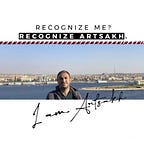The legendary creatures in Armenian Folklore
Armenian folklore has its roots in pre-Christian Armenian culture. With the invention of the Armenian alphabet, folklore found its way into written literature through several authors like Movses Khorenatsi, Agathangelos, Eznik of Kolb, Sebeos and Anania Shirakatsi. It absorbed Anatolian, Hurro-Urartian, Mesopotamian, Iranian, Roman and Greek philosophies. Hayastan is believed to have worshipped gods and creatures associated with natural phenomena.
In the Armenian pantheon, some gods are considered creatures including several legendary monsters and spirits that abound with elements both native and foreign-derived from the Persian culture such as:
Al — It is a dwarfish evil spirit that attacks pregnant women and steals newborn babies. Described as half-animal and half-man, its teeth are of iron and nails of brass or copper. It usually wears a pointed hat covered in bells and can become invisible.
Aralez — Aralezner — The oldest gods in the Armenian pantheon, Aralez are dog-like creatures (modelled on Gampr) with powers to resuscitate fallen warriors and resurrect the dead by licking wounds clean.
Devs — The Devs are air-composed spirit creatures originating from Zoroastrian mythology (the Daevas), and share many similarities to angels and demons. They reside in stony places and ruins and usually keep to themselves.
Shahapet — The Shahapet also called Khshathrapti, Shavod, Shoithrapaiti, Shvaz and Shvod, were usually friendly guardian spirits of Armenian, Slavic and Persian mythology, who typically appeared in the form of serpents. They inhabited houses, orchards, fields, forests and graveyards, among other places. The Shvaz type was more agriculturally oriented, while the Shvod was a guardian of the home. A Shvod who is well-treated may reward the home’s inhabitants with gold, but if mistreated might cause strife and leave.
Nhang — The Nhang (from the Persian word for “crocodile”) was a river-dwelling serpent monster with shape-shifting powers, often connected to the more conventional Armenian dragons. The creature could change into a seal or lure a man by transforming into a woman, then drag in and drown the victim to drink its blood. The word “Nhang” is sometimes used as a generic term for a sea monster in ancient Armenian literature.
Piatek — The Piatek is a large mammalian creature similar to a wingless griffin.
Vishap — A dragon closely associated with water, similar to the Leviathan. It is typically pictured as a winged snake or with a mixture of components from totally different animals. Before Iranian domination in Armenia, the dragons may have been called “gegh”. May have been connected to Hurrian Ullikummi and Hittite Illuyanka.
